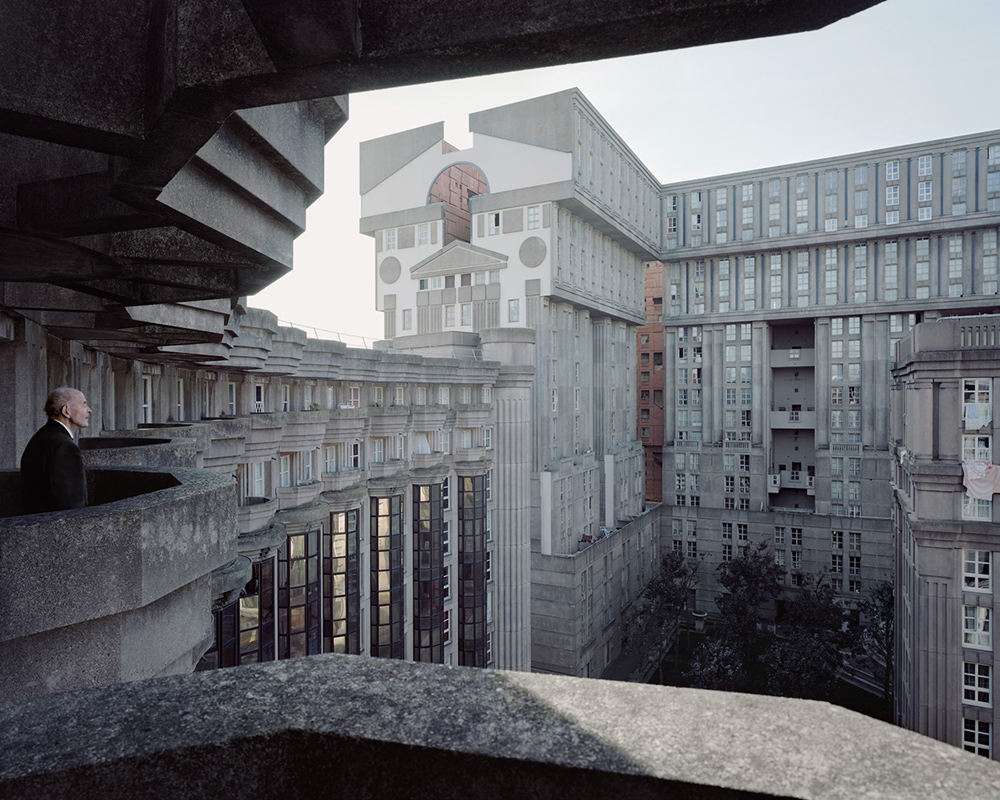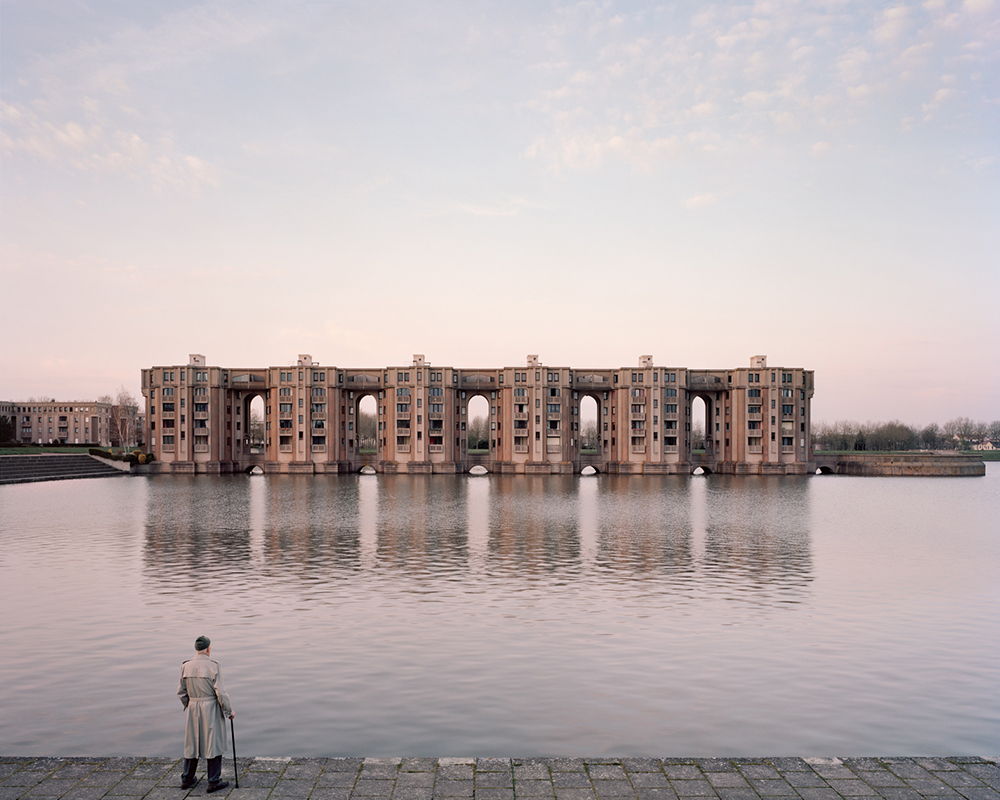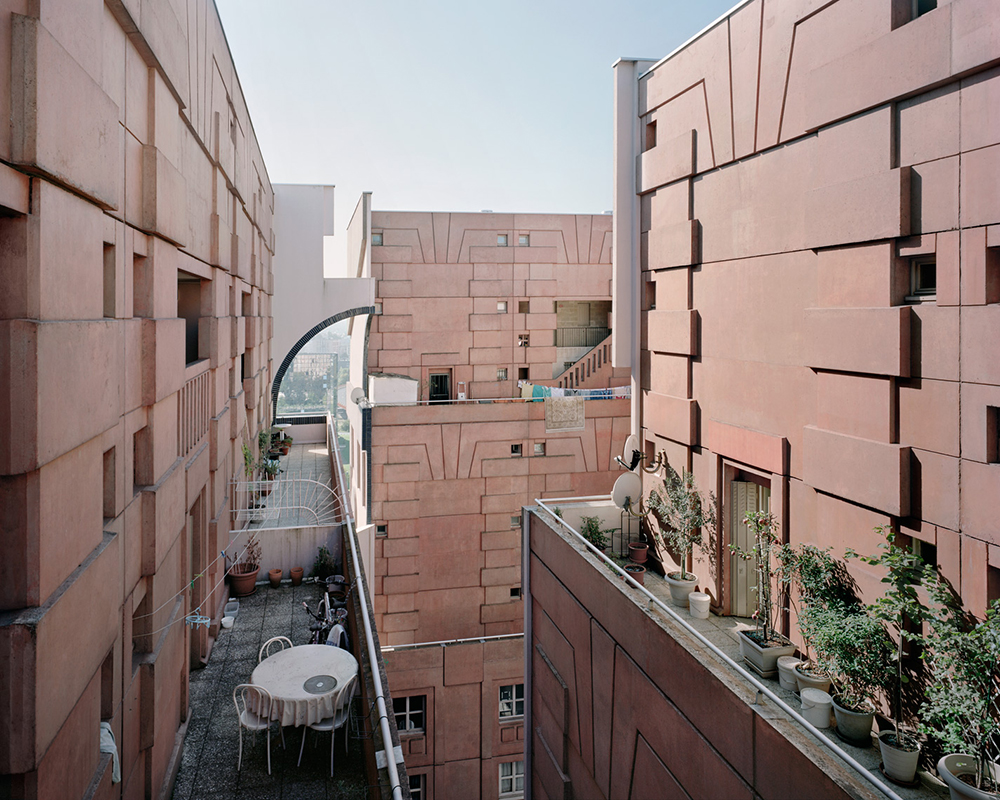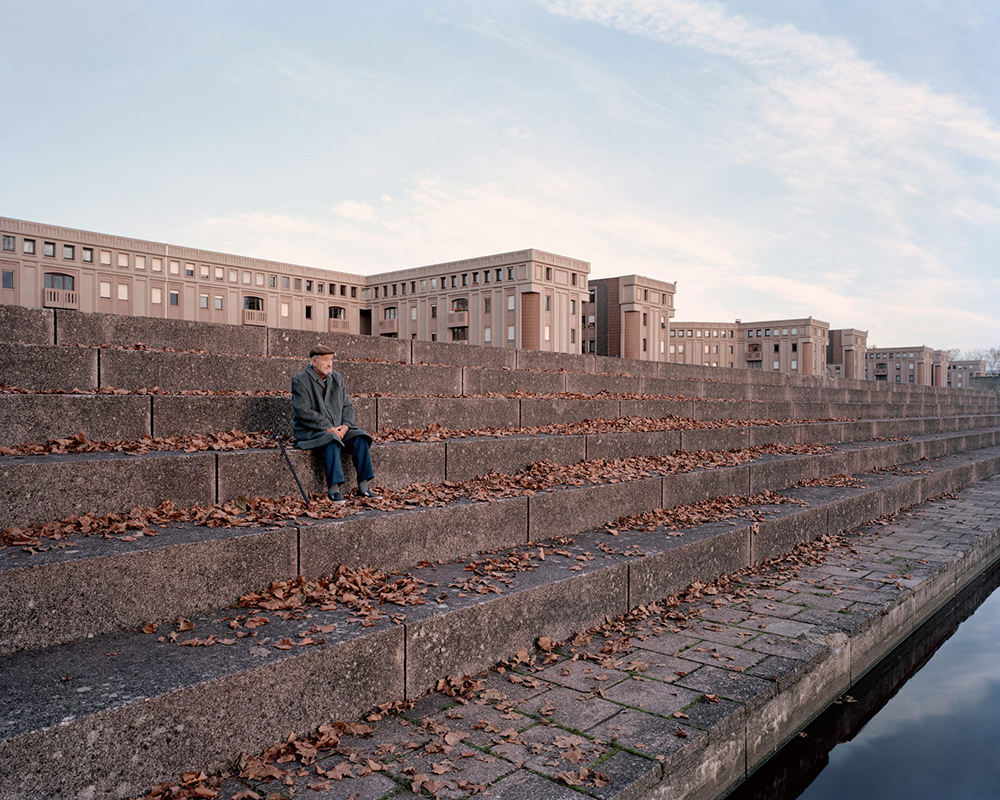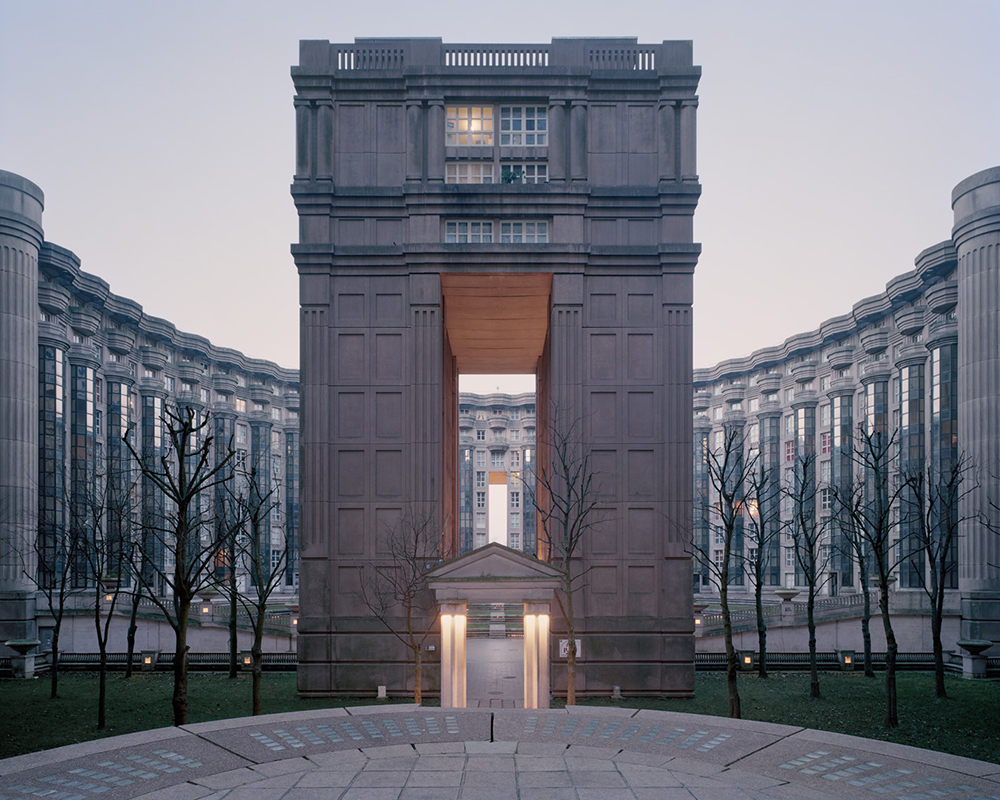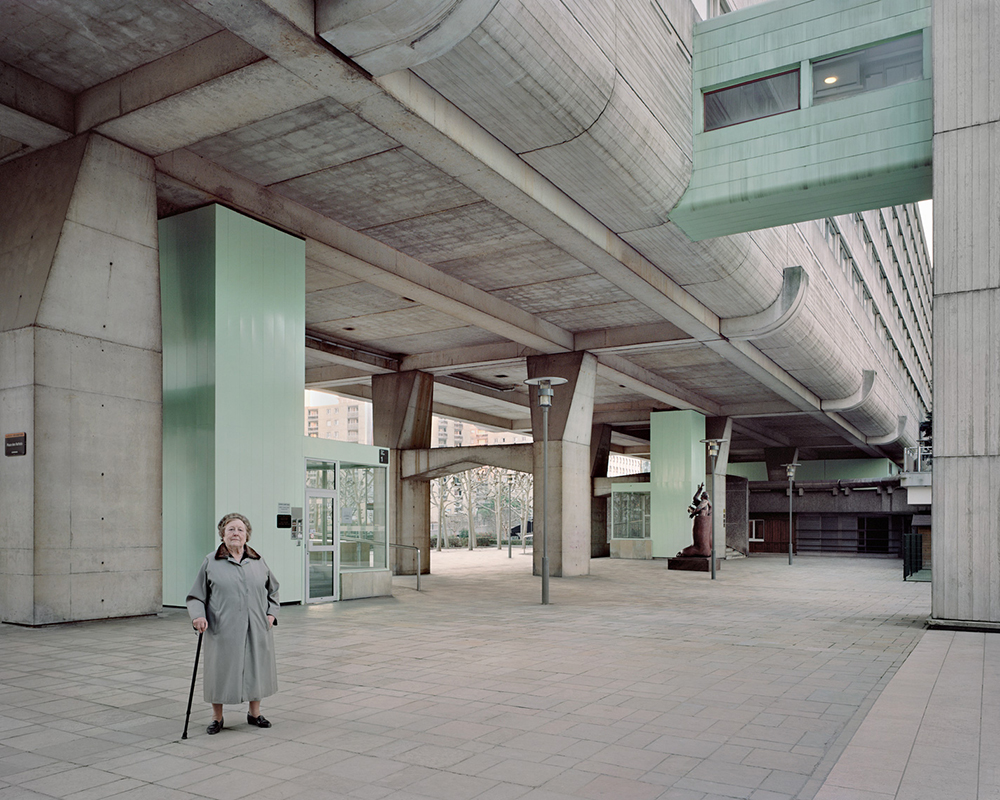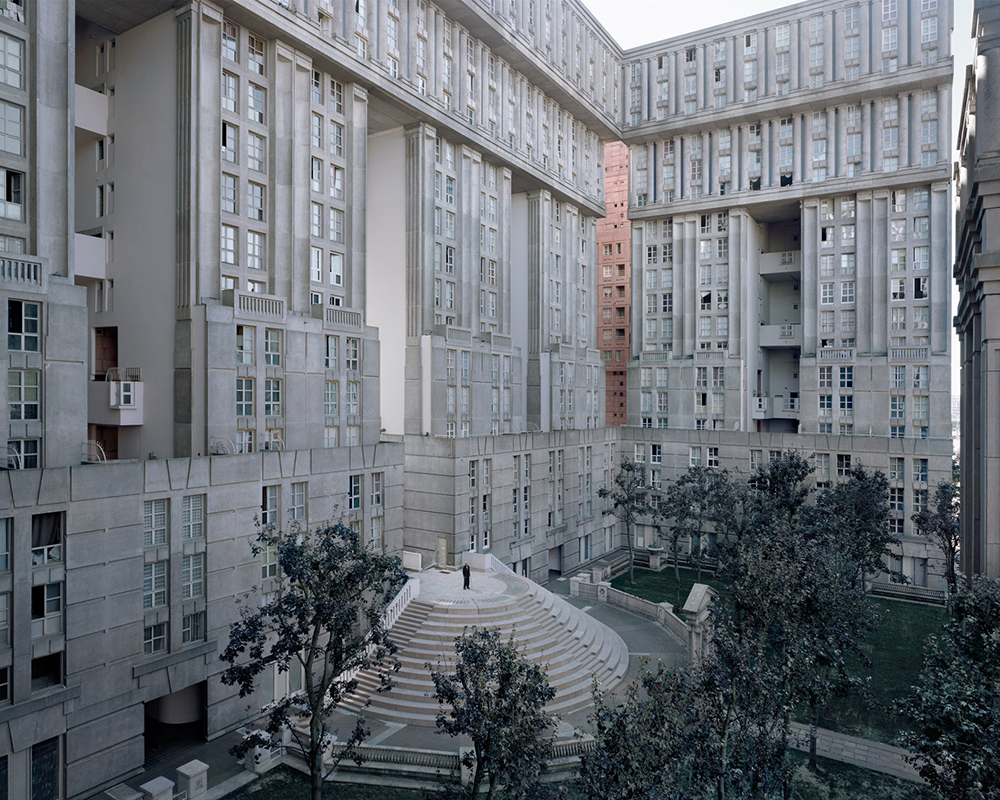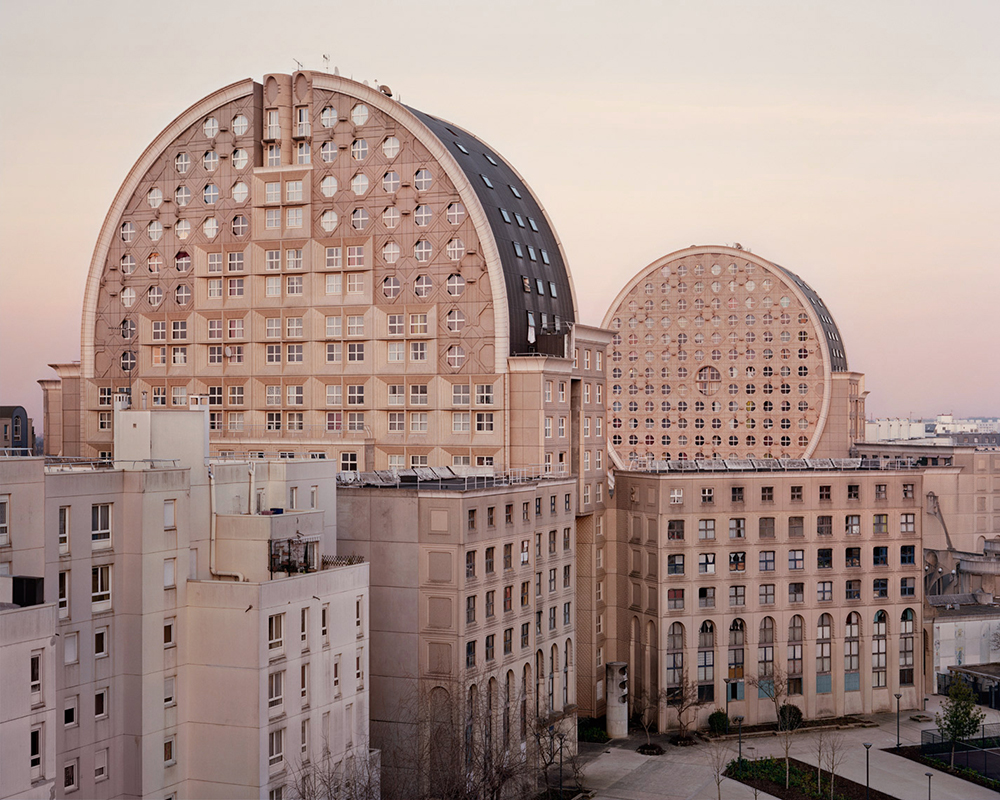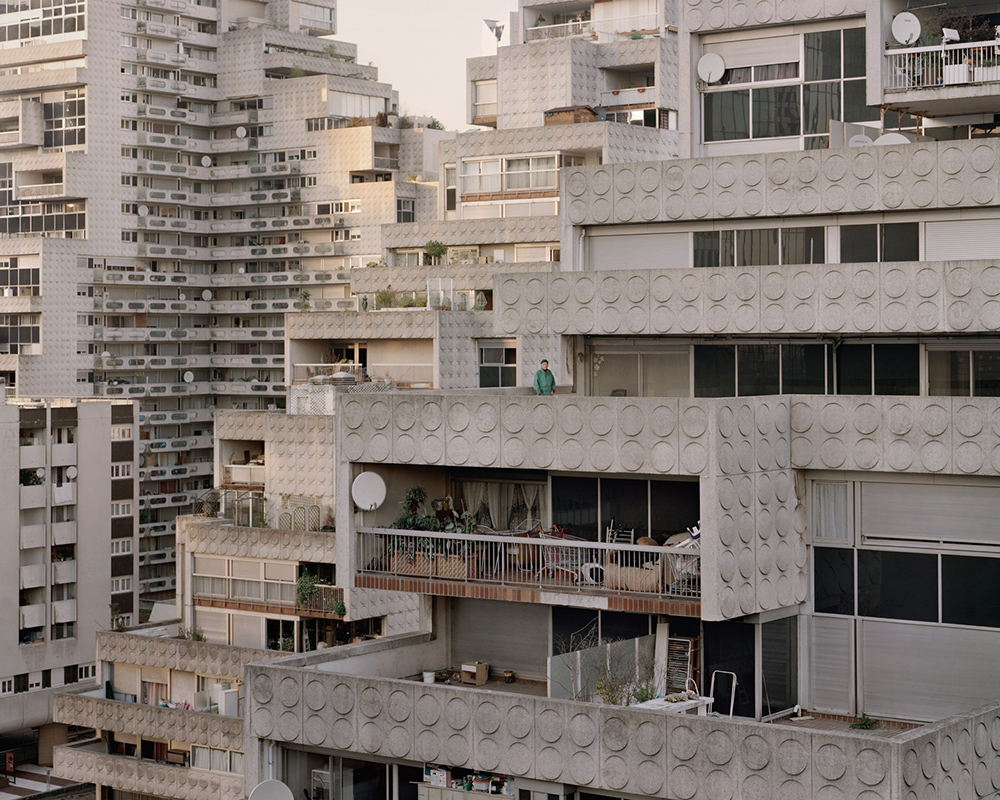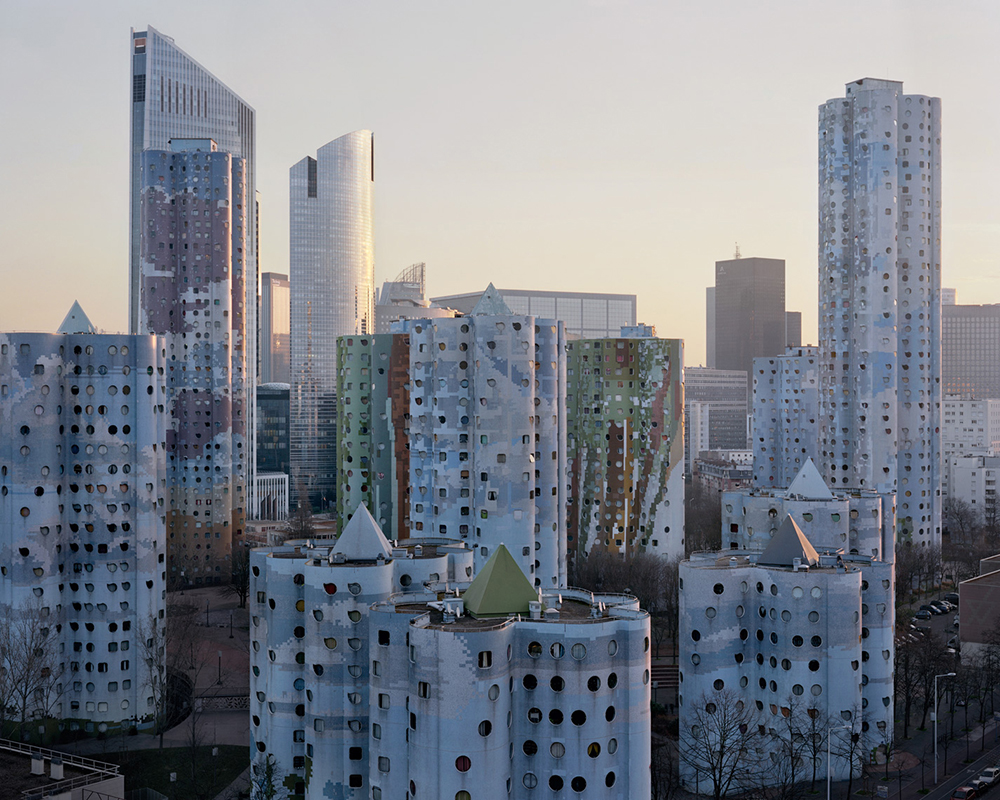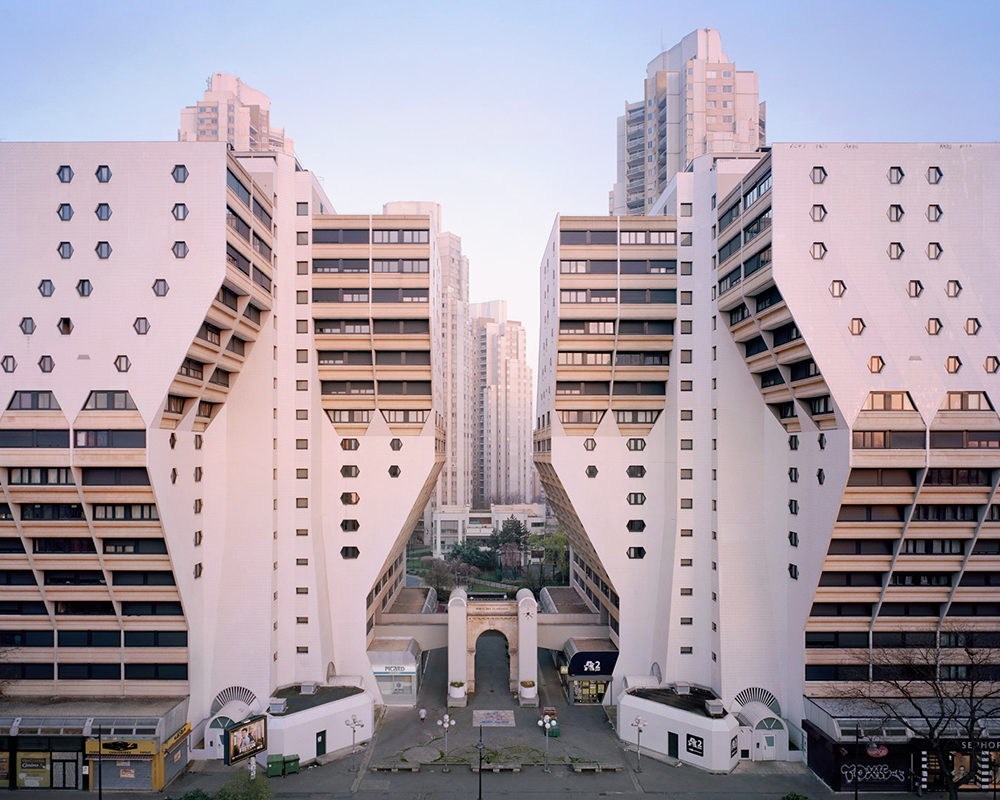Photographer Laurent Kronental takes PORT through his latest photography project, inspired by the buildings and inhabitants of Paris’ forgotten housing estates
The Grand Ensembles of Paris are a series of housing estates built in the suburbs of the French capital between the 1960s and 1980s. Their spectacular modern and post-modern architecture speaks of a mid-century optimism – a utopian vision of social housing that could create opportunity and employment for its citizens. Yet, despite their monumental size, the Ensembles have been largely forgotten, lost in the penumbra of the city and left to decline into deprivation and dereliction.
Having discovered the series of buildings four years ago, French photographer Laurent Kronental was inspired to begin Souvenir d’un Futur, a still-ongoing photographic investigation into these unique environments. Shot with 4×5 camera, a format traditionally favoured by architectural photographers, Kronental has also turned his lens to the older inhabitants of the estates, typically between 80 and 95 years old. The result is a poetic juxtaposition of the grand utopian buildings and their aged residents, unable to leave as the estates crumble around them.
Ahead of an exhibition of his work at the Bibliothèque Nationale de France in Paris, PORT spoke to Kronental about the pensioners’ stories, the history of the Ensembles and the influences behind the project.
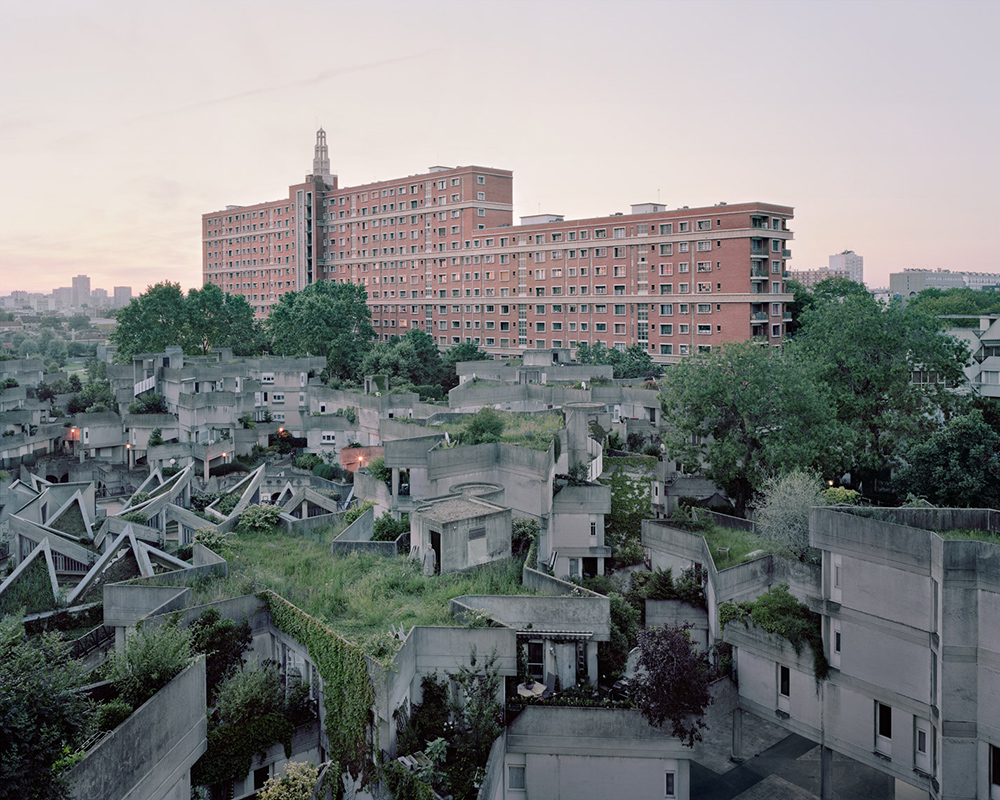
How did you first discover the Grands Ensembles and what attracted you to them?
Initially I was influenced by my experience in China, where I lived for six months in 2008 and took up photography. I was stunned by the tentacular immoderation of these gigantic cities and the way people lived in them. I became literally absorbed by the atmosphere of the city, by the astounding mix of futurism and tradition.
Two areas next to my home have been essential in my approach – Les Damiers at Courbevoie and Les Tours Aillaud at Nanterre. Then, in 2011, I discovered other examples of monumental and spectacular architecture in and around Paris such as the Espaces d’Abraxas or the district of Pavé Neuf in Noisy-le-Grand, the housing in Ivry-sur-Seine, the Orgues de Flandre in the 19th district of Paris or the Arcades du Lac in Saint-Quentin-en-Yvelines. I became interested in the history of these estates, the origins of their construction and the role they played in society. I am fascinated by their oversized urbanism, both rough and poetic, often ridiculed and always a point of contention.
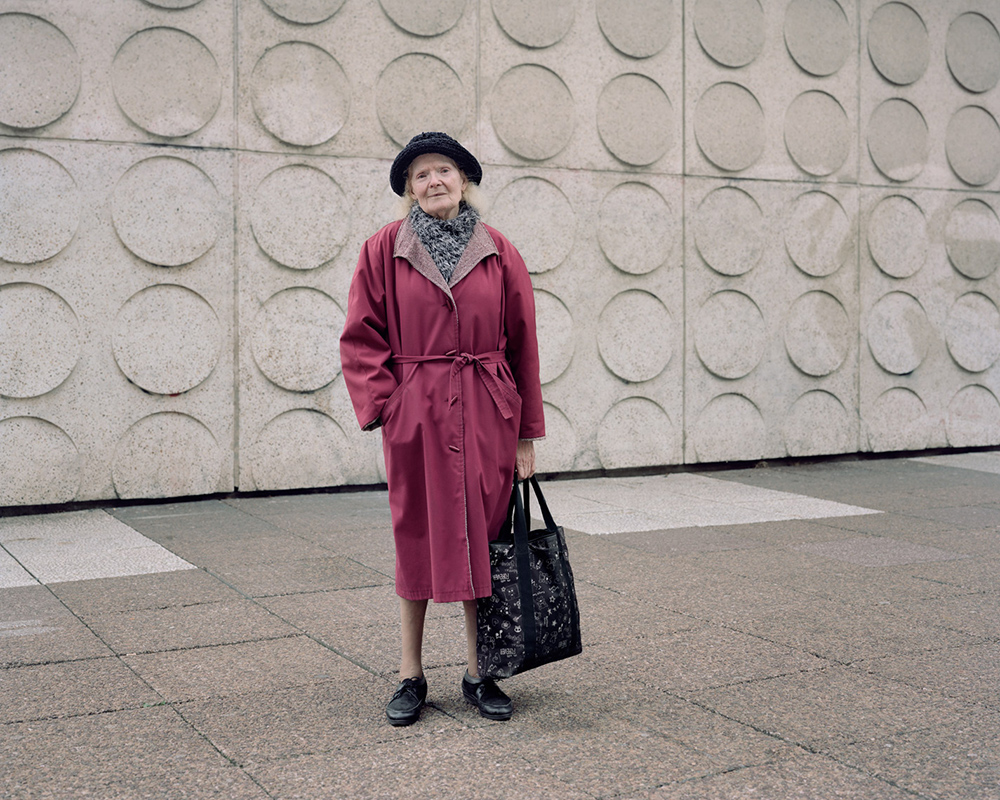
Can you explain some of the history of the projects?
For the most part built between the 1950s and the 1980s to address the housing crisis, urban migration and the inflow of foreign migrants, these large estates are often stigmatised and marginalised today. They are the symbol of a dream of a triumphant modernisation, where the population reaches a generalised and standardised comfort, and where the human being can blossom away from the agitation of the metropolis.
From the 60s, these districts begin to be criticised for the problems they raised and large-scale housing environments were increasingly rejected. The inhabitants felt pushed out of the city, the transport network being insufficient to reliably reach Paris. In the 1970s, these places had become economically and socially unstable, and by the 80s the first towers began to be destroyed. But in the 90s, the projects began to be recognised by cultural historians for their architectural and social significance. Eventually, in the 2000s, initiatives were launched to rehabilitate the Grand Ensembles, but much remains to be done to take care of this utopian, urban environment.
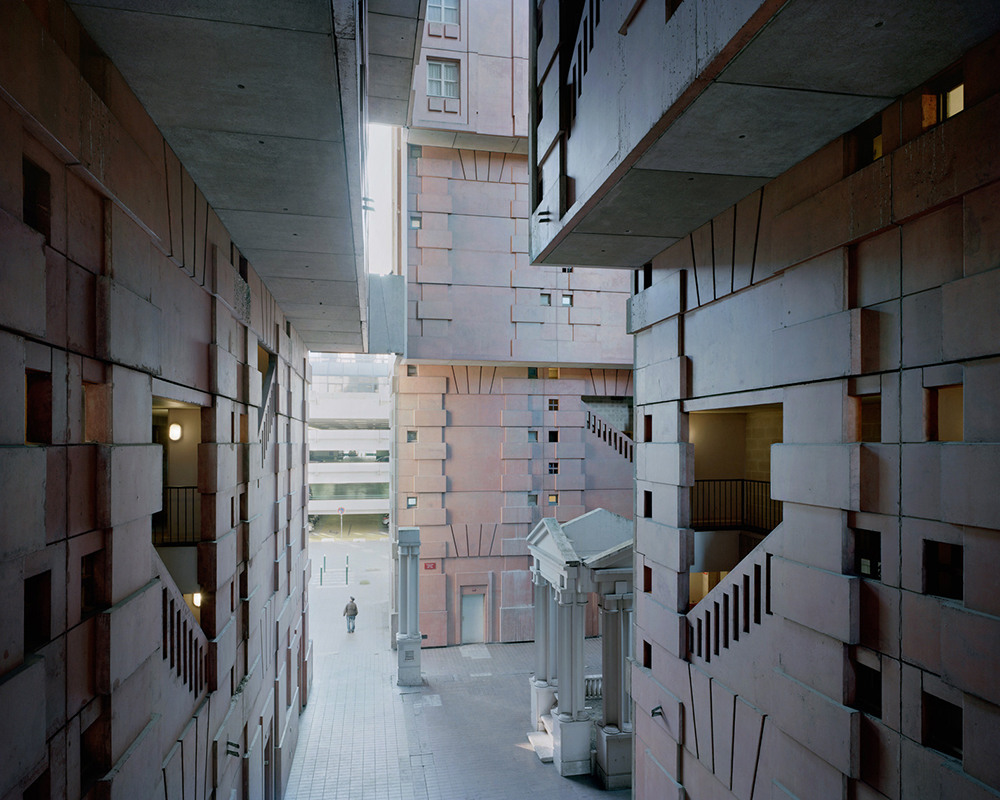
Why are the estates so empty in your work?
I wanted to create the atmosphere of a ghostly parallel world, mixing past and future while consciously conveying an impression of towns that are emptied of their residents and where the buildings dominate the people. The majority of the images were shot early in the morning to emphasise this feeling of a post-apocalyptic alternate reality.
Why did you focus on the lives and stories of the elderly?
I desired to question myself about conditions of their existence… to pour some light on a generation that we tend to forget. I wanted to undertake a project that associates man and architecture, so it was essential to gather these two worlds in one same photographic series. By switching from portraits, which depict personal emotions, to landscapes, in which the subject is lost in the vast estates, I wanted to show the scale ratios and interactions between the person and his city.
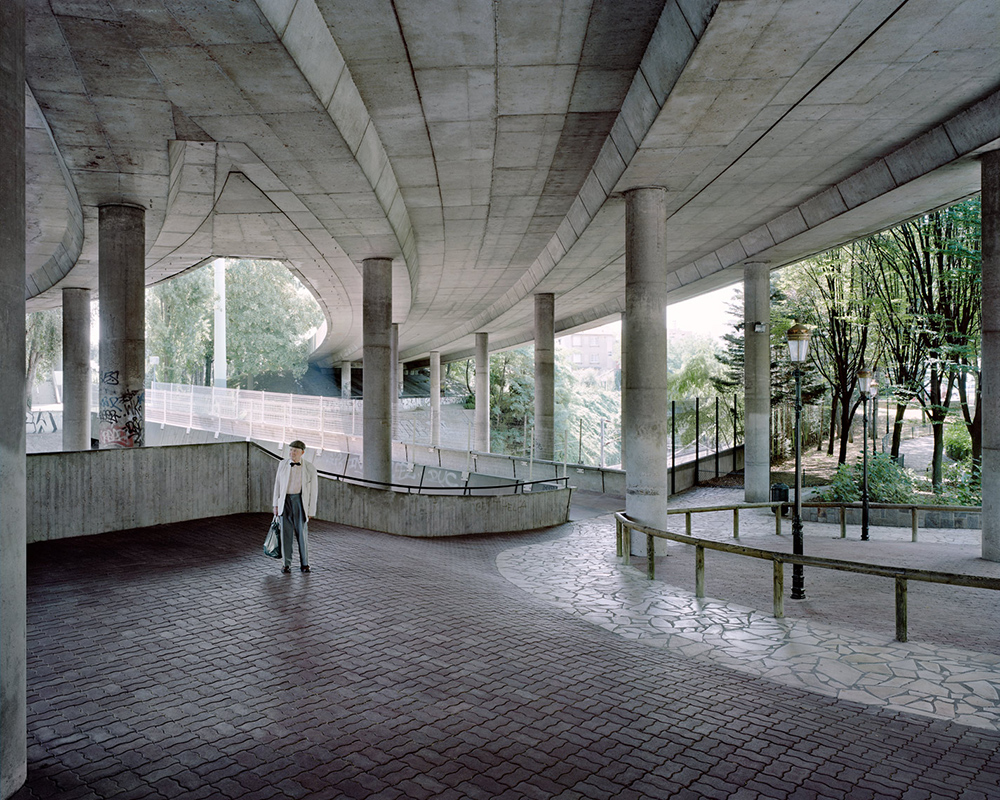
What have you discovered over the four years of investigations, both specific to the project and generally?
This project really helped me to refine my look and develop my critical faculty, to know how to build a series and to tell a story. But it also allowed me to meet an older generation which was hugely enriching. I built a very truthful relationship with one of the first elderly people I became close to, José (dressed in a green coat and cap). He had this penetrating gaze; his face is lined with experience, which was exactly what I wanted to capture against the architecture of the Ensembles. I wanted to understand how different the world now is compared to when he was living 70 years ago, and I imagined how I would be at his age.
